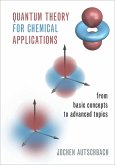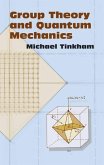Modern Chemistry Lavoisier's results and Atomic Theoryprovided chemists their first in depth understanding related tothe nature of chemical reactions. Another cornerstone whichdealt with the inherent property of all matter came a few yearslater in the form of atomic theory advanced in 1805 by anEnglish schoolteacher, John Dalton. This theory puts forwardthe theory that matter constitutes of small particles which arenamed atoms and that chemical changes take place betweenatoms or groups of atoms. Finally, being equipped with indepth views about the nature of matter and of chemicalreactions, chemistry began making rapid strides. Very soon one after the other the gas laws of Joseph LouisGay-Lussac and that of Joseph Louis Proust's law of definiteproportions came into being. In this period too came thehypothesis of Amedeo Avogadro, an Italian chemist, about thenumber of molecules in a volume of gas. To Dalton's theorythat the atoms of a single element have the same weight,Avogadro, in 1811, added the idea that one quart (or othervolume) of a gas has the number of molecules which areexactly same as that of any other gas with an equal volume ifboth are allowed to rest at the same temperature and pressure. His calculations also showed that if the gas is an element, suchas hydrogen or oxygen, the atoms usually unite in pairs toform molecules (written H2, O2, and so on). The scientistsknew, however, that equal volumes of different gases haveunequal weights. Avogadro's hypothesis implied that this showedrelative weights of single atoms. This has been proved to becorrect, and today Avogadro's law may be stated thus: equalvolumes of all gases under the same conditions of temperatureand pressure contain the same number of molecules. HumphryDavy, about 1806, isolated a number of elements to add to thegrowing list. Jons Jakob Berzelius, in 1826, analyzed hundred of compoundsand published accurate tables of atomic weights. FriedrichWohler's synthesis of urea in 1828 proved that organiccompounds could be made in the laboratory and opened avast new field of chemistry. This began the development of theconcept that organic compounds have geometric structure.Friedrich Kekule proposed cyclic (ring) structure of benzeneabout this time. Michael Faraday, formulated the laws ofelectrochemistry in 1834.
Dieser Download kann aus rechtlichen Gründen nur mit Rechnungsadresse in A, B, CY, CZ, D, DK, EW, E, FIN, F, GR, H, IRL, I, LT, L, LR, M, NL, PL, P, R, S, SLO, SK ausgeliefert werden.









